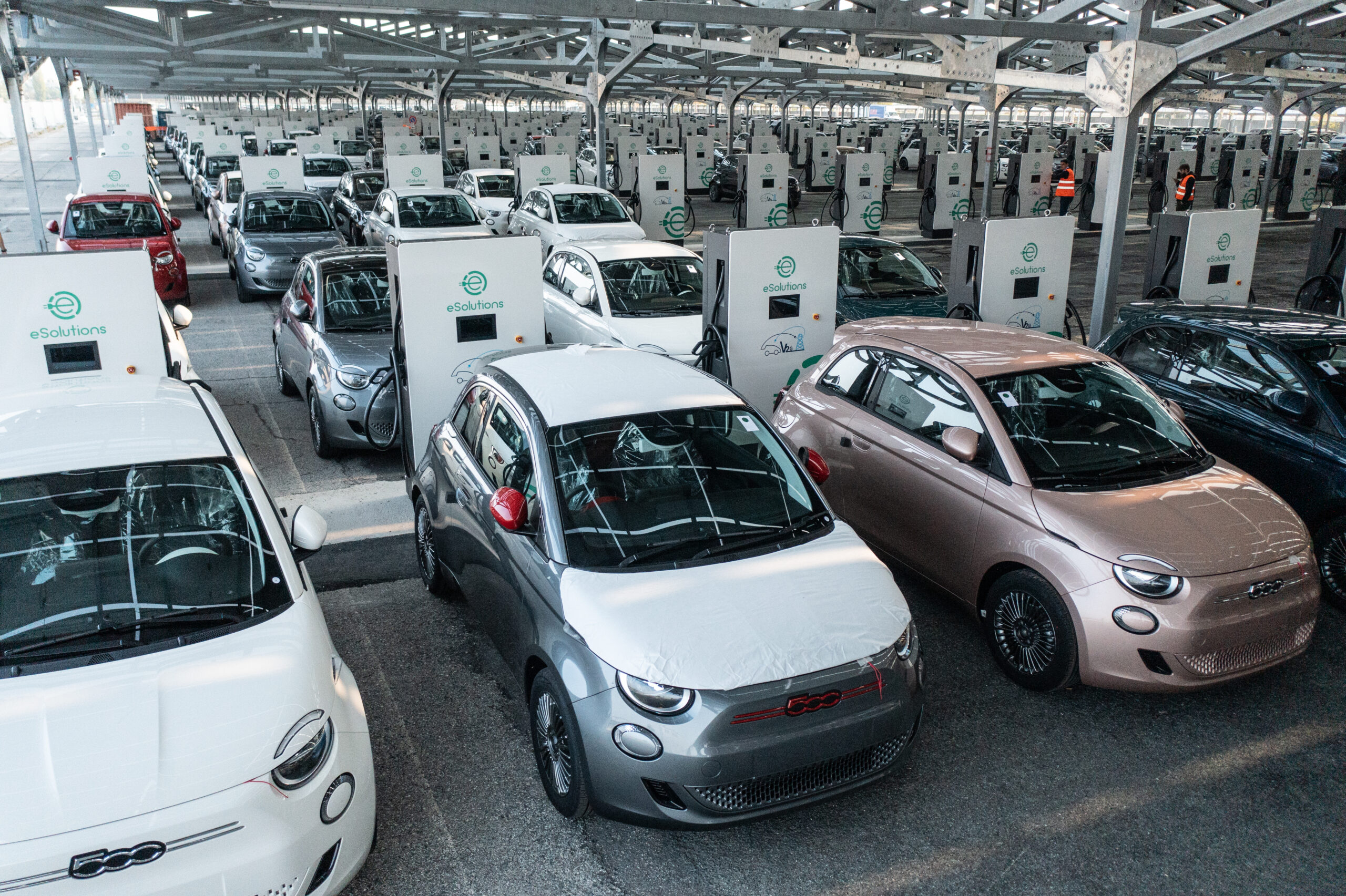Innovation

V2G TECHNOLOGY FOR INDUSTRIAL APPLICATIONS
What is Vehicle to Grid?
What is Vehicle to Grid?
The V2G (Vehicle to Grid) is a technology that makes charging a two-way exchange, allowing cars to return part of the electricity stored in their batteries to the grid to optimize its operation and alleviate the intermittent availability of renewable energy sources.
V2G technology powers bi-directional charging, which makes it possible to charge the EV battery and take the energy stored in the car’s battery and push it back to the power grid. There is a difference between bi-directional charging and V2G: while bi-directional charging means two-way charging (charging and discharging), V2G technology only enables the flow of the energy from the car’s battery back to the grid.
How does it works?
At the heart of V2G systems’ technology is a bidirectional power inverter which connects to the car’s high-voltage battery while simultaneously also connecting to the grid. The device can either take energy from the grid to recharge the battery or provide energy to the grid by taking it from the vehicle’s battery. The flow of energy is managed by a control unit which takes into account the grid operator’s demands or the energy status of the building the car is connected to, fitting this around the recharging schedule the user has set.
Key Benefits
Key Benefits
Reduce total cost of ownership (TCO) of fleets and eclectric vehicle for drivers
Car OEMs (manufacturers) can sell vehicles with added value
Energy market parties can trade and optimise their balance
Network operators can optimise investments & stabilise the grid
Our vision for V2G solutions
Our vision for V2G solutions
V2H & V2B TECHNOLOGIES APPLICATIONS
What are V2H and V2B technologies?
What are V2H and V2B technologies?
How do they work?
How do they work?
Key Benefits
Key Benefits
Energy Independence: Provides a reliable backup power source during outages, reducing reliance on the grid.
Cost Savings: Allows homeowners and businesses to cut energy costs by using the EV battery to supply power during peak tariff times.
Grid Support: Contributes to grid stability by supplying energy during high demand periods or absorbing excess during low demand, facilitating greater integration of renewable energy sources.
Environmental Impact: Supports the transition to a low-carbon energy system by optimizing the use of renewable energy and reducing overall carbon footprint.
Our vision for V2H and V2B solutions
Our vision for V2H and V2B solutions
We envision V2H and V2B technologies as cornerstones in the development of a more flexible, resilient, and sustainable energy ecosystem. Our goal is to harness the full potential of electric vehicles not just as modes of transportation but as integral components of home and business energy solutions. We are committed to advancing V2H and V2B technologies to empower our customers with greater control over their energy usage, enhance their environmental impact, and pave the way for a future where energy is shared, smart, and sustainable. By integrating these technologies into our offerings, we aim to create a seamless, efficient, and eco-friendly energy management experience for individuals and businesses alike, reinforcing our leadership in innovative charging solutions and our dedication to a greener planet.
Second Life Batteries
What is a Second life battery (SLB)?
What is a Second life battery (SLB)?
Second life batteries emerge from the automotive sector, carrying a residual capacity of 70-80% after their primary use in EVs. These batteries, though no longer suitable for vehicular use, hold significant potential for alternative applications, offering both economic and environmental advantages.
Applications and recycling process
Applications and recycling process
Second Life Batteries (SLBs) find new purpose in stationary energy storage, complementing renewable energy sources and enhancing grid stability. The recycling process involves repurposing batteries for these secondary applications and recovering valuable materials, aligning with sustainability and circular economy principles.
Key Benefits
Key Benefits
Maximization of the battery value, by using them while are not use for mobility
Mitigation of mineral extraction and an increase in resource conservation, thereby preventing the further depletion of the Earth’s minerals and avoiding energy- and emission-intensive material processing
Make electric vehicles cheaper because it converts waste disposal costs into residual value, further fostering the energy transition and triggering a virtuous cycle of decarbonization.
Our vision on SLB applications
Our vision on SLB applications
Our commitment to SLB technology is rooted in a vision to revolutionize energy storage and repurposing. We aim to pioneer solutions that extend the lifecycle of EV batteries, promoting a more sustainable and circular economy. By integrating SLBs into our product lineup, we not only contribute to environmental conservation but also enhance the value proposition of EVs and renewable energy systems. Our vision is to lead the way in sustainable innovation, proving that technological advancement and environmental stewardship can go hand in hand.
Contact us for more information
If you are interested in our Innovation projects we are looking forward to hearing from you. Complete the form indicating your needs and we will be in touch with you.
Error: Contact form not found.